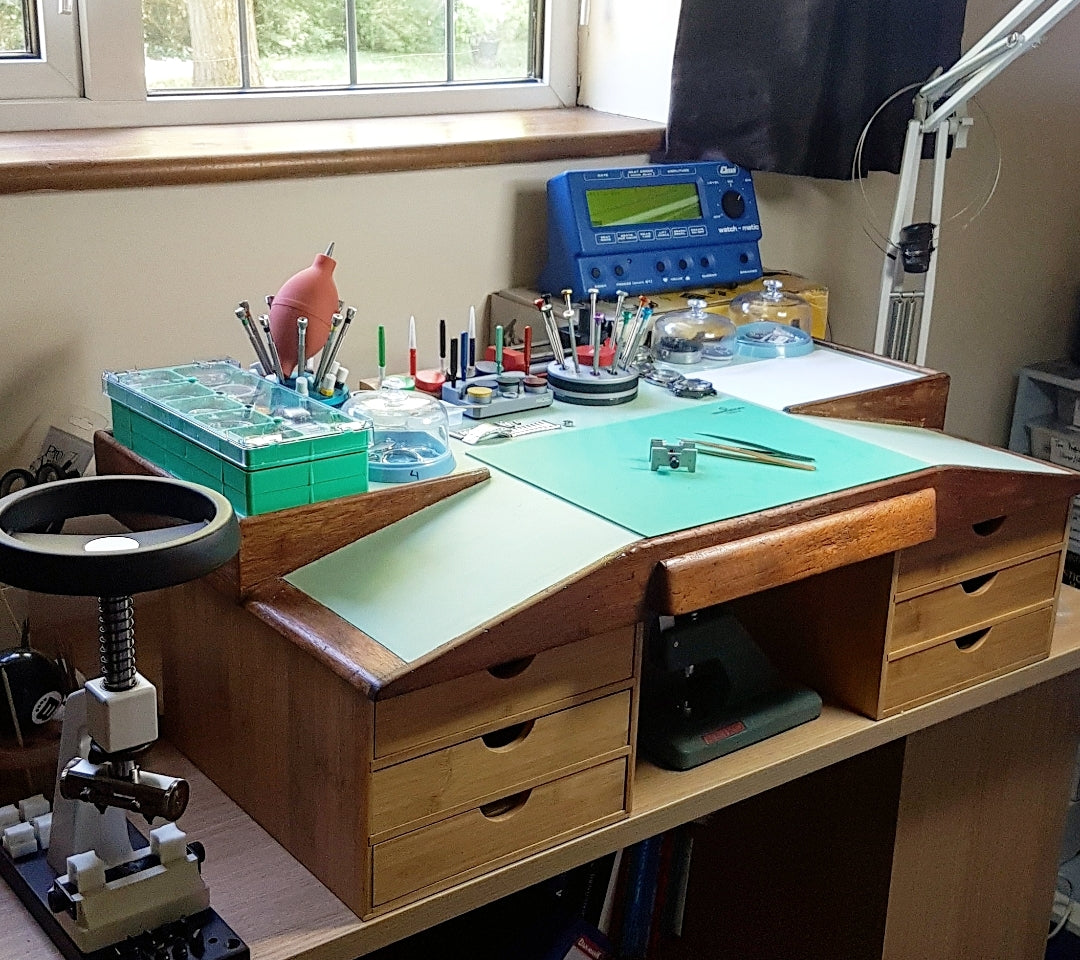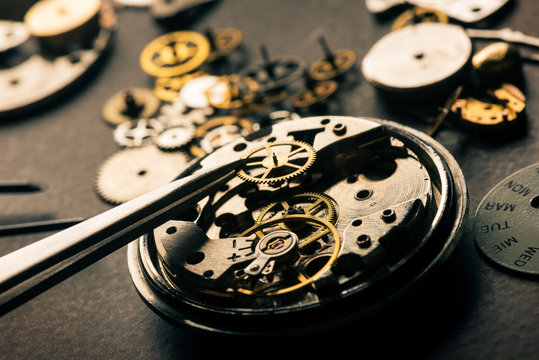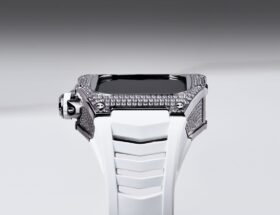Table of Contents
Guide to Watch Maintenance: Tips to Keep Your Watches Forever
Hey there, fellow watch lovers, I’m Vincent, a passionate watch collector who’s been diving deep into the world of horology for over a decade. From vintage pieces that tell stories of the past to modern quartz wonders that keep perfect time, I’ve learned that owning a watch isn’t just about strapping it on, it’s about caring for it like a trusted companion. Recently, I stumbled upon some fantastic resources while researching maintenance for my own collection. As the curator of this post, I decided to pull together all the gems from these spots into one comprehensive guide. No fluff, just real, actionable advice that’s helped me extend the life of my watches. If you’re searching for “watch maintenance tips” or “how to care for mechanical watches,” you’ve landed in the right place. Let’s dive in and make sure your watch stays as reliable as the day you got it.
Why Watch Maintenance Matters More Than You Think
Watches aren’t just accessories; they’re intricate machines battling daily enemies like dust, moisture, shocks, and extreme temperatures. Think about it, whether you’ve splurged on a luxury mechanical piece or picked up an affordable quartz model, neglecting care can lead to costly repairs or a shortened lifespan. From my experience, a little routine love goes a long way. I’ve dropped a vintage watch once (lesson learned the hard way), and it taught me that prevention is key.
Drawing from the experts I mentioned, proper maintenance ensures accuracy, preserves value, and lets your watch last for generations. Mechanical watches, with their hundreds of tiny parts, need regular winding and servicing to keep lubricants flowing and gears smooth. Quartz watches are tougher but still require battery checks and cleaning. Vintage ones? They’re charming but demand extra caution. In this guide, I’ll break it down step by step practical advice for all types of timepieces.
Getting Started: Basic Tools and Habits for Everyday Watch Care
Before we get into the nitty-gritty, let’s talk tools. You don’t need a full watchmaker’s kit to start, keep it simple. From what I’ve gathered, a lint-free cloth is your best friend for daily wipes. Add a soft-bristled toothbrush for gentle scrubbing on metal parts, and if you’re handy, a watch case opener for battery swaps (but only if you’re confident, otherwise, leave it to pros).
One habit I swear by is daily cleaning. After wearing your watch, give it a quick wipe to remove skin oils, sweat, and dust. This prevents buildup that could sneak into the case. For leather straps, which absorb moisture easily, moisturize them occasionally to avoid cracks. If your strap looks worn, replace it, it’s an easy upgrade that refreshes the whole look.
Avoid extremes right from the start. Direct sunlight can fade dials, heat messes with batteries in quartz watches, and humidity risks rust on internal parts. I once left a watch in my steamy bathroom overnight, and it fogged up the next day not fun. Even if your watch is water-resistant, don’t push it; gaskets degrade over time. Test water resistance yearly if you swim or shower with it, using a professional pressure check.
Handling your watch safely is crucial too. Always do it over a soft surface, like a cloth or jewelry box, to cushion any accidental drops. And never wind or adjust it with dirty hands grease can transfer and cause issues down the line.
Caring for Mechanical Watches: Winding, Lubrication, and More

Mechanical watches are engineering marvels, with designs that haven’t changed much in centuries because they’re that good. But all those moving parts mean they need specific TLC. Regular winding is non-negotiable, it keeps the mainspring powered and distributes lubricants evenly, reducing wear on gears.
I make winding part of my morning ritual for daily wearers, but for pieces in my collection that sit out, once a month does the trick. Wind at full power for best accuracy, as most watches are regulated that way. For longer-power-reserve models, like 7- or 8-day ones, pick a consistent day, I’ve heard it called “wind-day” on Sundays, which I love.
A big no-no: Don’t wind on your wrist. Tilting the watch puts stress on the stem, which can bend or snap. Take it off, find a safe spot (not over tile floors, trust me, I’ve been there), and wind gently. If you’re walking or in a rush, just wait.
Lubrication is the unsung hero here. Over time, oils dry out or thicken, leading to friction and wear. That’s why servicing every 5-10 years is recommended, depending on use. Vintage mechanicals with complications (like chronographs) might need it sooner, they’re like finicky classic cars. Signs you need service? If it’s running slow, stopping unexpectedly, or needing more frequent winds.
For cleaning, stick to a damp cloth for the case and avoid soap, as residues can seep in. Vintage pieces? Even gentler just warm water on a soft cloth. And if you’re dealing with small watches (under 30mm), know they’re trickier to service due to tiny parts, so they might cost more.
Quartz Watches: Simpler Care for Reliable Performers

Quartz watches are the low-maintenance heroes of the watch world battery-powered, durable, and often shock-resistant. Think G-Shocks that can survive 10-meter drops (Casio even tested prototypes by tossing them out windows back in the ’80s!). But they still need attention.
Battery changes are the big one every 1-3 years, or sooner if the watch slows or stops. Don’t let a dead battery sit; it can leak and corrode internals. I always take mine to a pro for this, as opening the case risks damaging seals.
Cleaning is similar to mechanicals: daily wipes, monthly deep cleans with a toothbrush for links. Water resistance? Restore it during service if needed, but avoid testing old watches in water. Quartz is more forgiving, but extremes like heat can shorten battery life.
If you want hassle-free, quartz is my go-to recommendation for beginners. They’re simpler, more durable, and don’t require winding—just reliable timekeeping.
Vintage Watches: Charm with a Side of Caution
Vintage watches hold a special place in my heart they’re full of history and character. But they come with challenges. Maintenance is more frequent, especially for complicated ones. Pick either age or complexity if you want less hassle; both together means more work.
Water resistance on vintage? Forget pushing limits gaskets from decades ago aren’t reliable. Clean gently, no immersion. Drops are a vintage killer, so be extra careful when putting on or taking off. I dropped a 1950s jumping-hour watch twice (from a now-defunct brand), and finding parts was a nightmare. Rarity is cool, but obscurity bites when repairs are needed.
Crystals can scratch or crack; keep originals if replacing, for resale value. Products like Polywatch work wonders on acrylic. And always get estimates before major work specify no polishing unless you want it, as it can remove patina.
Mentally and financially, prepare for extra effort. But the reward? A piece that lasts generations with proper care.
Servicing and Repairs: When to Go Pro

No matter the watch, professional service is inevitable. For modern ones, every 5-10 years; vintage sooner. Costs vary, but it’s an investment companies of watches even lose money on it due to part inventories and labor.
Watch for symptoms: inaccuracy, stopping, or power issues. Under warranty? Use it wisely send in near the end for a refresh that extends coverage. some companies offers eight years, which is generous.
Don’t test limits freezing watches or wearing them for extreme sports risks damage. Shock systems are great but not invincible. For strap changes, use proper tools like a Bergeon springbar tool, and practice on cheap watches first. Tape lugs to avoid scratches.
If something’s off, visit an authorized dealer or repair center where you but your watches, or find Watch maintenance near me around your environment. Vintage over four years old? Get checked regardless.
Common Mistakes to Avoid in Watch Maintenance
From my mishaps and the sources I’ve reviewed, here are pitfalls:
- Using soap: It sneaks into seals.
- Ignoring gaskets: Annual checks for water lovers.
- Over-testing: No need to prove it’s tough.
- Polishing without asking: Preserves value.
- Delaying battery swaps: Corrosion risk.
- Handling carelessly: Drops happen during winding/removal.
Stay gentle, and your watch will thank you.
Enjoying Your Watch: The Fun Part
At the end of the day, watches are meant to be worn and enjoyed. Locking them away defeats the purpose wearing keeps them wound and lubricants active. It defines your style and builds appreciation. Problems are rare for such complex machines; most fixes are quick.
I’ve built my collection by following these tips, and it’s paid off. Whether it’s a Rolex alternative crystal from True Dome or just daily wipes, consistency is key.
FAQ: Your Burning Questions on Watch Maintenance Answered
How often should I service my mechanical watch?
Aim for every 5-10 years, but sooner if it’s vintage or shows issues like inaccuracy. Regular use and winding help, but professional lubrication is essential.
What’s the best way to clean a watch at home?
Use a lint-free cloth daily. For deeper cleans, a damp soft-bristled toothbrush on metal parts. Avoid soap and never submerge non-water-resistant watches.
Can I wind my watch while wearing it?
No, remove it to avoid stressing the stem. Wind in a safe spot over a soft surface.
How do I know if my quartz watch battery needs changing?
If it slows, stops, or dies prematurely. Change every 1-3 years; don’t let dead batteries sit to prevent leaks.
Are vintage watches worth the maintenance hassle?
Absolutely, for the charm and history. But expect more frequent servicing and harder-to-find parts. Choose simple ones if you’re new.
What’s the difference in care between mechanical and quartz watches?
Mechanicals need daily winding and more servicing for lubricants. Quartz is simpler focus on battery changes and cleaning.
Should I test my watch’s water resistance myself?
No, get a professional pressure test annually if you expose it to water. Gaskets degrade over time.
How can I avoid scratching my watch when changing straps?
Use a quality springbar tool, work from the back, and tape lugs if unsure. Practice on inexpensive watches first.
Is it okay to wear my watch during sports?
For casual activities, maybe, but avoid high-impact like golf or chopping wood. Shock protection isn’t foolproof.
When should I contact the manufacturer for repairs?
If under warranty and issues arise. For example, IWC’s eight-year warranty covers misuse-free problems; Timex handles in-warranty fixes directly.
MORE ON WATCHNIFICENT
- Citizen Watch Battery Replacement Guide: How to
- How to check citizen watch serial number: How to Guide
- The 5-Step Guide To Buying Classy Watches Within Your Budget
- The Best Luxury Watches for Men in 2025: Review and Prices
- Rolex vs Grand Seiko Brands Comparison
- Timex Watches 2025: My event in New York City











